Last updated on December 21st, 2020
James Earl Carter served as the 39th president of the United States from 1977 to 1981. His favorite color is blue. He was a distinguished diplomat, humanitarian and author. He was awarded the Noble Peace prize in 2002. With these 52 interesting facts about Jimmy Carter, let us learn more about his early life, early career, run for presidency, presidency, and life after presidency.
Facts about Carter’s early life, family, education
1. James Earl Carter was born October 1, 1924 in the then small boomtown of Plains, Georgia to parents Lillian Gordy Carter and James Earl Carter Sr.
2. Carter Sr. was a small businessman and a farmer who would be later elected to the Georgia House of Representatives. According to Carter’s admission, his father was his “best friend” during his growing years.
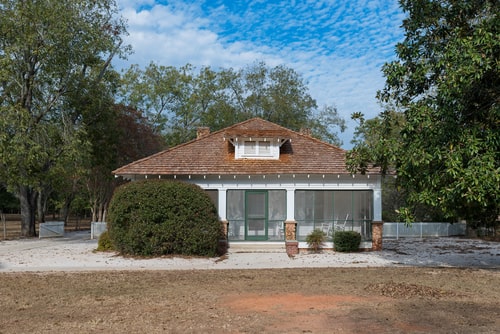
3. Carter’s mother was a registered nurse and was, at the time of his birth, in the employment of Wise Sanitarium, the hospital where the young Jimmy was born. In later life, she would act as a Peace Corps volunteer. Carter remembers his mother as being dynamic, humorous, compassionate and as having a healthy and inquisitive attitude about life around her.
4. Carter was the first U.S. president to be born in a hospital. He is the first president from Georgia.
5. Jimmy was the eldest of the four children in the family. He had three siblings: his sisters Gloria and Ruth and his brother Billy. There’s hasn’t yet been a president who was an only child.
6. During his childhood years, Carter came in close contact with members of impoverished African-American communities and befriended their children. Although Carter Sr. himself was pro-segregation, he was tolerant towards this and this early exposure of James Carter to the lives of Black Americans must have played an important part in shaping his attitude toward racial segregation in American life in general. As an adult, Carter was to be a staunch supporter of Civil Rights Movements and actively opposed practices based on racial discrimination.
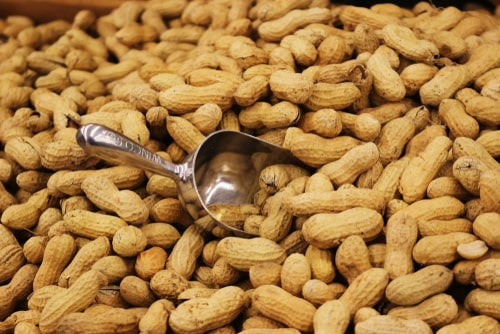
7. Already as a child, Carter showed his penchant for business. He was known to sell peanuts from his father’s farm on the streets of his hometown. Once at age nine, he bought five bales of cotton out of his earnings and then stored them for a few years before eventually selling them for a profit. Later, as a teenager, Carter Sr. gave his eldest son an acre of his farmland where young Jimmy grew peanuts and out of the earnings, purchased and then rented out a section of tenant housing.
8. From 1937 to 1941, young Jimmy attended the Plains High School. He was fond of reading (as a youth, Carter’s favorite gift to receive was books) and also excelled as a student. However, he also had a reputation of being a bit of a truant and legend has it that Jimmy was passed over for valedictorian for playing hooky on an important date.
9. During this period of his life, Julia Coleman, his teacher at the Plains High, was an important influence in Jimmy’s life. Mrs. Coleman was instrumental in kindling Jimmy’s interests in art, music and literature.
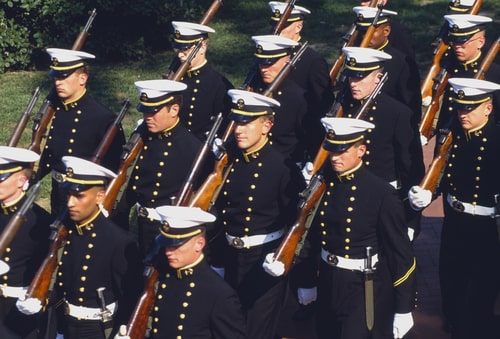
10. In 1942, Carter enrolled at the Georgia Institute of Technology in Atlanta and eventually graduated from the U.S. Naval Academy in 1946 with a B.Sc. degree. He finished 60th among 820 midshipmen in the class.
11. Sports: From his early days, Carter has been a sports enthusiast. He played for the basketball team at the Plains High and also represented the sprint football team of Navy Midshipmen during his stay at the Naval Academy. Another sport Carter actively pursued was Tennis (the Carter family had a dirt court back at Plains when Jimmy was a child)
Facts about Carter’s early career, marriage, children, entry into politics
12. Carter married Rosalynn Smith, a native of his hometown and friend of his sister Ruth, on July 7, 1946. The couple has four children: John, James Earl Carter III, Jeffrey and Amy.
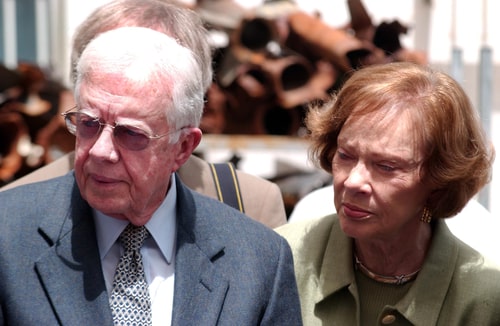
13. After serving seven years in U.S. Navy, Carter returned to Georgia upon his father’s death. He decided to sacrifice his career in navy and instead devoted himself to the management of the family-owned farms and peanut warehouses.
14. He extensively read as well as took courses on both traditional and modern agricultural methods and with the help of Rosalynn, who helped with accounting, was able to establish himself as a successful agrarian businessman despite meeting with early setbacks.
15. Carter’s political career is believed to have begun with his tenure as the member of the local board of education. At the beginning, his anti-racial and reformist views at a place that was still strongly pro-segregation served to hamper his public and political career.
16. As such, Carter adopted a more cautionary approach so as not to alienate himself too much and he was subsequently elected in 1962 to the Georgia State Senate as a Democrat.
17. In 1966, Carter ran for Governor of Georgia but lost in the Democratic Primary Election to Lester Maddox.
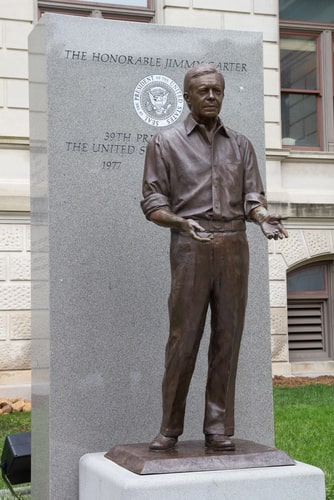
18. He ran again for governorship in 1970 and having learned from his bitter experience from the past, limited himself to being less vocal about his liberal racial views.
19. However, once elected as Governor of Georgia, he immediately declared that “the time for racial discrimination is past” and went on to implement various reformist actions, among them opening the state’s government offices to blacks and to women.
20. Carter also consolidated into larger units a slew of different state agencies with a view to more effective governance and introduced stringent budgeting procedures. Thanks to these actions on his part, Carter found his way onto the cover of Time magazine and he was hailed as the symbol of the “New South” as well as of good governance.
Decision to Run for President
21. During his tenure as Georgia Governor, Carter began to increasingly associate himself with national Democratic Party politics. He already headed the Democratic Governors Campaign Committee by 1972 and his persona as political figure was further consolidated in 1974 when he was elected as the chair of the Democratic National Campaign Committee.
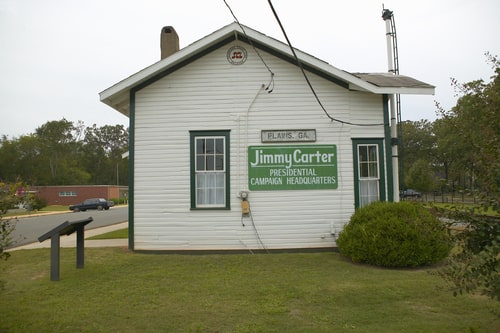
22. For all that, however, Carter was still a relatively obscure political figure outside of his native south and many still believe that if the Georgia State Legislature did not prohibit him to run for re-election as Governor, he might not have run for consistency.
23. Be as it may, Carter publicly announced his intention to run for president in 1974 itself. However, this was a bold decision and was met by surprise from many quarters.
24. The fact that Carter had to defy many odds toward his declared goal can be gauged from the result of a public opinion poll (conducted late 1975) on possible Democrat candidates. The list did not even include Carter’s name.
25. In the next year’s primaries, however, Carter was able to beat decisively the other serious candidates, namely George Wallace, Governor of Alabama; Rep. Morris K. Udall of Arizona; and Senator Henry M. Jackson of Washington.
26. During his presidential campaign, Carter promised to stable the by then ever-fluctuating inflation rates, reduce unemployment rates and to create a balanced budget by the end of his presidential tenure. He also proposed tax reforms that would largely benefit the lower and middle income groups. With regard to foreign policy, his stated position included signing a peace treaty with the Soviet that would put a stop to the aggressive nuclear weapon race.
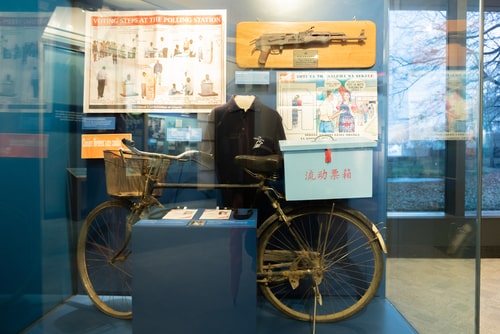
27. However, apart from his reformist views, Carter’s appeal with the general public lay specifically on his being an ‘outsider’— a former navy and an agribusinessman from a humble background— and on the emphasis he placed on restoring the faith on the moral leadership of the executive branch of the government, which was at all-time low following the Watergate scandal and Richard Nixon’s stepping down from presidency in order to avoid criminal charges.
28. Carter’s Presidency button campaign read “I’m Nuts About JIMMY CARTER as Bicentennial President.”
29. Carter is the only U.S. president to have lived in subsidized housing before he took office.
1976 Presidential Election
30. In November 1976, Carter won the presidential election defeating Gerald Ford, the incumbent Republican president who assumed office after Nixon’s resignation. The Democrats won 297 electoral votes to Gerald Ford’s 240 and was also able to capture 51% of the popular vote.
Facts about his presidency
31. Having assumed office, Carter appointed Cyrus Vance as US Secretary of State, Griffin Bell as Us Attorney General, Juanita M. Kreps as Us Secretary of Commerce and Burt Lance as his Chief Budget Director.
32. Carter’s chief advisers during his tenure included his vice-presidential running mate Walter F. Mondale and the renowned American lawyer Charles Kirbo. Carter had long been a fan of Kirbo and he once commented that meeting Charles Kirbo was one of the smartest decisions he had taken in his life.
33. Although it is not often mentioned, Rosalynn, in addition to meeting her duties and responsibilities as the First Lady, also used to attend cabinet meeting on certain subjects and acted as one of Carter’s main advisers. Later in life, Carter mentioned that his wife was probably the most influential person in his life.
34. As for Walter Mondale, many believe that the vice president was behind a majority of Carter’s reformist ideas. This US Senator from Minnesota was the Democrat nominee in the presidential election of 1984 but he heavily lost to the incumbent president Ronald Reagan.
35. Another interesting fact about Carter is that immediately after joining the office, he granted amnesty to all the Vietnam war-draft evaders, as he had promised he would do during his presidential campaign.
36. Carter’s presidency began in an optimistic note as he was able to carry out his promises to combine or dissolve different federal agencies that provided more or less similar sort of services. He established two new cabinet-level departments: the Department of Education and the Department of Energy.
37. With the approval of congress, he was also able to pass a legislation primarily aimed at lowering income taxes.
38. Carter also proved himself as an astute politician when it came to dealing with foreign affairs. He was successful in the creation of a peace treaty between Israel and Egypt (now famously known as Camp David Accord). Carter also attracted worldwide acclaim for his decision to cut off US aid to all nations engaged in committing human right violations.
39. However, his Panama Canal treaties of 1977 earned him mixed reviews in his home country, even though it was regarded by the world as a positive step by US in curbing its often aggressive foreign policy.
40. On the economic front, however, Carter administration did not fare too well. Many of Carter’s proposed reforms such as conservation, use of alternative energy sources, and implementation of an oil tax could not be put to rail due to Congress’ virulent oppositions.
41. As such, inflation began to rise (by the mid-1980, the inflation rate had reached 15%) and so did unemployment rates.
42. Carter’s foreign policy also received an unexpected jolt once Soviet Union sent troops to Afghanistan which annulled the former nuclear weapon peace treaty agreed upon by the two nations.
43. In addition to domestic disappointments, the Iran Hostage Crisis of the 1979-80 landed Carter administration in further difficulties.
44. Carter served as the Democratic nominee in the presidential election of 1980 but suffered a landslide defeat at the hand of Republican candidate Ronald Reagan.
45. In his farewell address, delivered from the Oval Office on the evening of January 14, 1981, Carter did not make any mention of the Iranian hostages or the present economic crisis. However, he did caution against the intrusion of special-interest groups and organizations that can harm the greater interest of the American people.
Things to know about Carter’s after the presidency life
46. At the conclusion of his term, Carters returned to their hometown of Plains, Georgia and has since lived in a simple ranch-style house in the outskirts of the city.
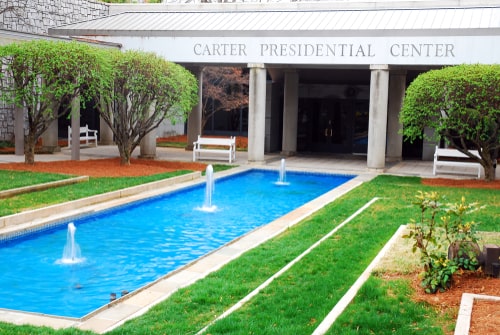
47. In 1982, Jimmy and Rosalynn Carter established the Carter Presidential Center that associates itself with a slew of human rights issues, especially in developing and third world countries.
48. The former president and his wife have also involved themselves with the organization Habitat for Humanity that provides affordable housing for the poor and the homeless.
49. Throughout the 1980s and much of 1990s, Carter has remained actively involved in international relations and has performed many commendable jobs in bringing about peace between warring countries.
50. As recognition of his decades long untiring efforts to find peaceful solutions to international conflicts; furthering democracy and human rights while promoting economic and social development, Jimmy Carter was awarded the Noble Peace Prize in 2002.
51. More recently, Carter has become somewhat of a prolific author and his 30 odd books spans various genres including international relations, personal memoirs and journal, and even books of poetry. Two of his most notable books are Hornet’s Nest (2003) and Palestine: Peace Not Apartheid (2006).
52. At 95, James Earl Carter is the longest-living United States President and the longest-retired president.
